Cyphastrea Stony Coral: Complete Care Guide
- Jul 23, 2021
- Anshika Mishra
- 1840 0 0
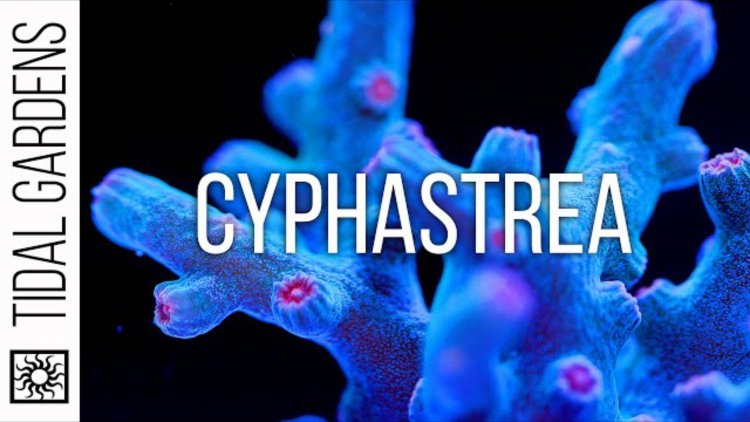
Cyphastrea is one of the most demanding corals in the reef-keeping hobby right now. Unfortunately, just a few years ago, they were relatively unknown and not readily available for purchase. Still, as more and more people have successfully propagated the various color morphs, Cyphastrea has gained popularity in the hobby.
For years the prevalent color morph was the red and blue meteor shower variant, but now, there are so many that you can make an entire reef just out of different types of Cyphastrea and have your bases covered for both colors and growth patterns.
It is not difficult to see why Cyphastrea captures the heart of so many reefers. They are attractive coral with uniquely spaced polyps. The fact that they begin aquacultured has all kinds of benefits for overall sustainability and the robustness of the individual corals.
There is still an influx of Cyphastrea from wild colonies collected from Australia and Indonesia, which has its benefits, and more color morphs are discovered and made available in the trade. But, let's start with the basics:
What is Cyphastrea?
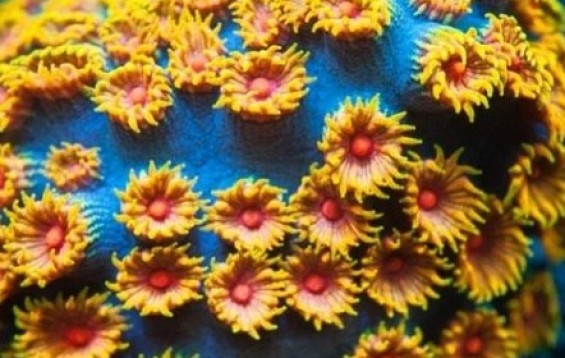
Cyphastreas are a massive reef-building species and are part of the stony coral family called Merulinidae. In the hobby, they are available predominantly in encrusting variety. However, there are unusual branching and plating varieties available from time to time. They are much less common, but it just goes to show you the diversity of this coral.
Care Requirements
Lightning
Cyphastreas are one of the most accessible stony corals to care for. It is often recommended to reefers delving into hard corals for the first time mainly because it loves the lower light conditions. Unfortunately, it is one of the few corals you don't want to put in high or even moderate light.
We recommend lightning intensity under 100 PAR to start, and if you want to move them to high light conditions, do so very slowly. Exposing this coral to high light will introduce it to substantial risks of overexposure. So, when it doubt go with dimmer light, and if you want to acclimate them to a brighter area of the tank, do so slowly and be prepared to move it to the shadier areas at the first sights of trouble, e.g., when it starts to bleach, or the polyps remain tightly closed.
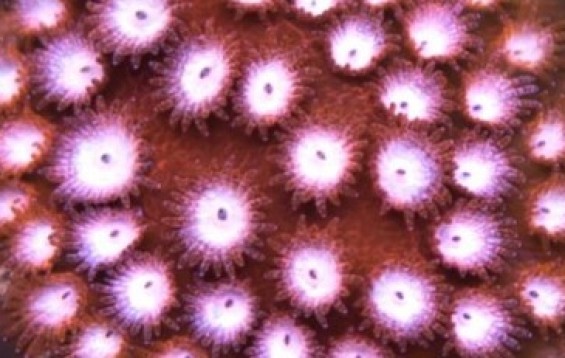
Color Consistency
Cyphastreas can color shift to some degrees. They are not as variable as Acrapora that can shift the palette. Still, Cyphastreas can become more vibrant and colorful when they are happy, and they can take on a more drab appearance when grown in sub-optimal conditions.
Many factors can affect their appearances, such as a change in the light, water chemistry, nutrition, or just stressful events like shipping. They might lose some of their colors while transiting, but they will color back up quickly if given the right conditions over a relatively short period.
Water Chemistry
Cyphastreas are a fast-growing stony coral, and as such, they require some extra attention compared to soft corals or slow-growing, large polyp hard corals. There are three major chemical parameters that Cyphastreas need to build their stony skeleton. They are:
- Magnesium
- Alkalinity
- Calcium
Calcium: calcium in most reefs hovers right around 425ppm. In solution is a bioavailable ion taken in by several organisms such as algae, inverts, and corals to build up their calcium-carbonate structures. It does not swing as widely as some of the other water parameters, but it is a good idea to test it now and again to ensure that it stays in the general vicinity of the natural seawater. This is true in an aquarium with fast-growing stony corals like Cyphastreas that will soak up more as they grow larger.
Alkalinity: It is not a particular ion but a collection of ions and can be thought of as the buffering capacity of saltwater. Buffering capacity is the amount of acid required to lower the saltwater pH to the point where the by-carbonate turns into carbonic acid. In layman's terms, higher alkalinity levels equate to more excellent chemical stability in our reef tanks. However, in practice, alkalinity tends to be the parameter that fluctuates the most of the above three and is the one that needs the most babysitting.
In the wild, the alkalinity of water is right around 70kH. Still, it can also be kept as higher as 90kH in home aquariums, as they promote coral growth and provide some additional buffering capacity. However, maintaining the correct level of calcium and alkalinity can be a little tricky because of how they interact with one another. The two ions combine to form calcium carbonate and fall right out of the solution, thus lowering both levels when adding just calcium. If you are experiencing this in your tank, then the culprit must be Magnesium.
Magnesium: It's a little counter-intuitive, but these three ions interact regularly. Magnesium behaves similarly to calcium, and it can bind up carbonate ions and thus increase the overall bio-availability of alkalinity compounds in the water. So, again if you find that no amount of tweaking calcium and alkalinity independently is helping the situation. In a saltwater aquarium, Magnesium is around 1350 parts per million.
There are many ways to maintain water chemistry. In smaller, lightly stocked aquariums, regular weekly water changes are often enough to stabilize these parameters. But in most cases, additional supplementation is required significantly as Cyphastreas grow larger. The three most popular methods of maintaining these parameters are:
- Kalkwasser top off
- Calcium reactor
- Some manner of two-part dosing (manual/automatic)
You can keep a thriving reef using any of the above methods. It's what suits your tank and you the best.
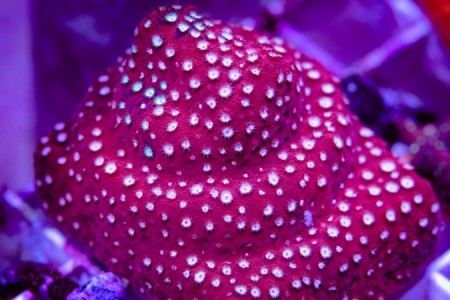
Nutrient Level: by nutrient, we are focusing on nitrates and phosphates. Cyphastreas are pretty adaptable and will survive in lower nutrient, and higher nutrient situations but these levels will impact their appearance. Too much nutrient and then coral might turn n an unattractive brown color, too little nutrient and they might a plate emaciated appearance given a choice between the two. Though their elevated levels could cause problems, they are required for biological processes in coral and cannot be produced through photosynthesis.
Cyphastreas don't tolerate zero nutrients without a significant amount of supplemental planktonic coral food or amino acids. So they need to get their nitrate and phosphate from somewhere.
- The nitrate level should be about 5-10 ppm, but a slightly higher one won't do any harm.
- Phosphates level right around 0.01-0.05 ppm
If these figures go up, then the growth or the coloration of the corals might get affected. Worst case scenario, those chemical parameters lead to other problem like algae blooms, which is both unsightly and can compromise the health of these corals in your tank.
Water Flow
Cyphastreas require a moderate indirect flow just so no detritus build upon their body. As they grow, however, their shape can become more of a detritus trap. So, you may have to change things up to keep them clean. Also, if the residue is allowed to build up over time, it will kill all the corals underneath. So, bear this in mind for both placements and for the shape you plan the coral to grow in, as some firms will be easier than others. Cyphastreas are mostly encrusting; however, there are also uncommon plating and branching morphs.
If you want to feed the corals directly, you'll want to be able to completely shut off the flow to them because any flow will wash away the food before the coral has a chance to grab and eat it.
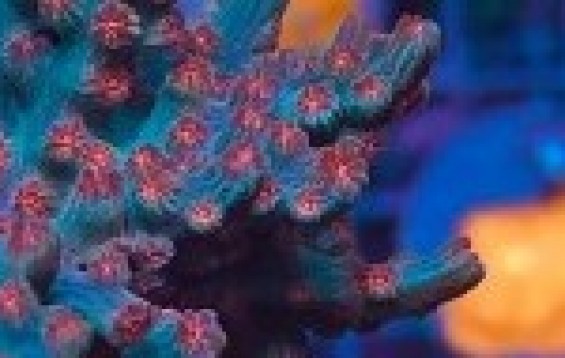
Feeding
Most hobbyists do not go through the effort of target feeding Cyphastreas, and that it may be more effort than what it's worth. However, if you turn off the flow and provide them with appropriately sized food, they take a fair amount, but they slightly off the rest. So, if you decide to target feed them, a couple of food sources would work well: amino acids and tiny zooplankton. Starting with amino acids, they are simple organic compounds containing a carboxyl group and an amino group.
Organisms use them for building proteins, and they are also necessary for other biological functions like Neurotransmitter transport and biosynthesis. There are several commercially available amino acid additives, and you can also DIY your solution from a mix of amino acid powders.
Although coral nutrition is essential, it is equally important to make sure not to overfeed the aquarium. Overfeeding can lead to issues that can be a significant hassle to overcome. On the other hand, a little bit of feeding goes a long way. Still, all those benefits are wiped away if you cause a nutrient overload, and especially considering that Cyphastreas are not the most aggressive eaters in the world, cost benefits don't work out in its favor.
Cyphastreas are a bright spot for propagation and aquaculture when it comes to sustainability. They make an excellent choice for commercial and home aquaculture due to their exceptional growth rates. All the different color morphs available in the hobby today are the result of successful propagation. Cyphastreas are less frequently imported, so most of the frag-size pieces that you see available are all likely farmed.
Conclusion
Who is Cyphastrea really for?
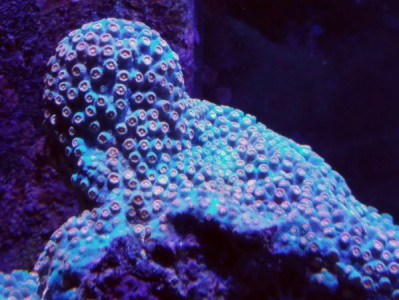
It is a tremendous beginner-friendly coral that can find a home in various tanks ranging from mixed-reefs to shadier sections of an SPS-dominated tank. They have a unique appearance and come in a wide variety of colors.
So, if you are a collector, Cyphastreas will keep you busy, tracking down all the different color morphs.


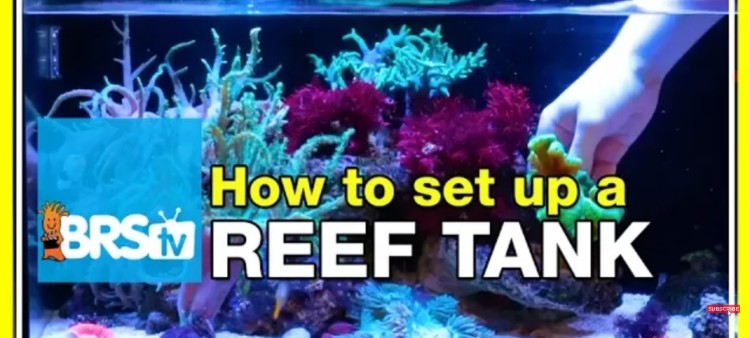


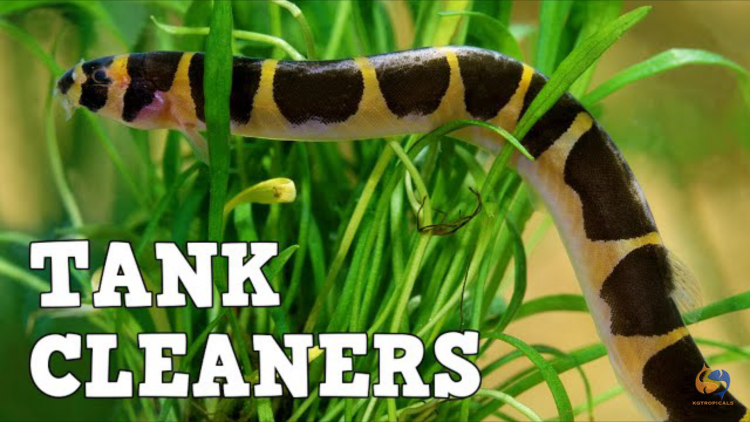
About author